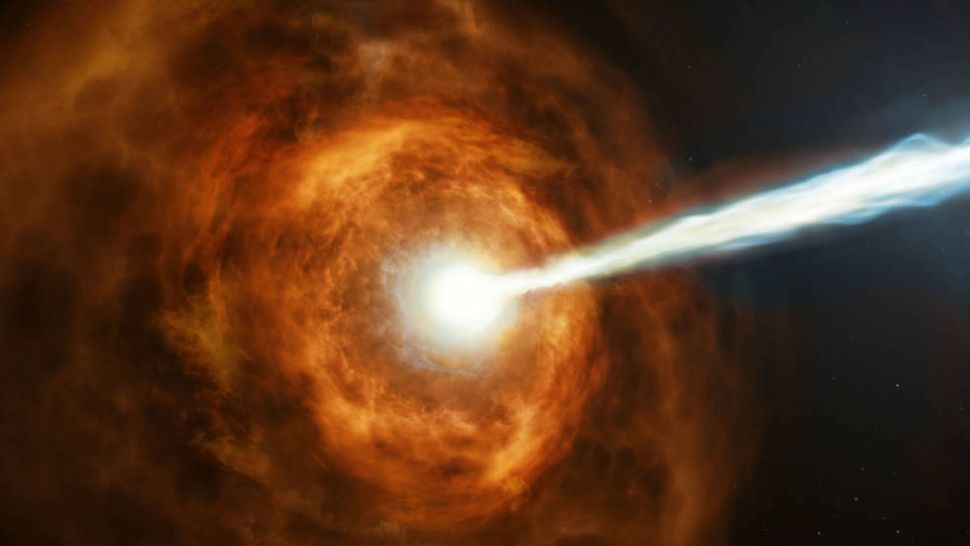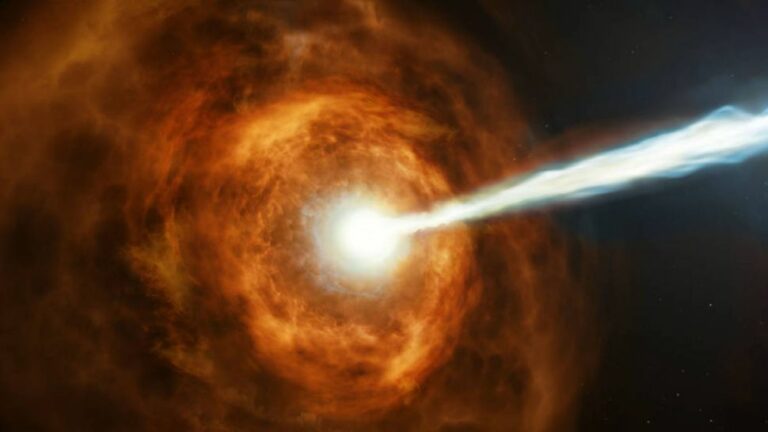Astronomers have recently observed the brightest light burst ever seen.
The gamma-ray burst was also the nearest ever detected.
Recently, astronomers may have observed the brightest burst of light ever.
Telescopes discovered the so-called gamma-ray burst on Sunday, the most intense sort of electromagnetic explosion known to occur in the cosmos (Oct. 9).
Gamma-ray bursts, which were unintentionally found by American military satellites in the 1960s, are probably created when massive stars explode at the end of their lifetimes before squeezing into black holes or when neutron stars combine, which are ultradense stellar remnants. These explosions release as much energy in a few of seconds as the sun will produce in its entire 10-billion-year existence.

The 18 teraelectronvolt burst that was discovered on Sunday was the most powerful one ever seen. The observations are still being examined by scientists, but if the results are verified, the gamma-ray burst would be the first one ever discovered to have more energy than 10 teraelectronvolts.
Astronomers first concluded the flare must have been created by a nearby source due to its intensity. Additionally, they first thought that gamma rays, not X-rays, were the form the energy was taking. The signal’s subsequent analysis proved that it was in fact a gamma-ray burst from a source located 2.4 billion light-years distant. The gamma-ray burst is still the nearest object ever observed, despite not being particularly close.
Although this gamma-ray explosion was safely away from Earth, one that occurred substantially closer to our globe might be disastrous. Within tens of thousands of light-years of Earth, such an explosive flash would deplete the planet’s ozone layer and probably result in a mass extinction. In fact, according to NASA, experts believe that one of the most significant mass extinctions in Earth’s history, the Ordovician extinction, which happened 450 million years ago, may have been brought on by such a blast.
The recently discovered gamma-ray burst, designated GRB221009A, seemed 20 times closer to Earth than the typical gamma-ray burst, yet it is still enough far away to thrill rather than worry.
This event is definitely exciting! ScienceAlert spoke with Gemma Anderson, an astronomer from Curtin University in Australia who researches related occurrences (opens in new tab). “Due to the event’s proximity and high energy, its radio, optical, X-ray, and gamma-ray light emissions are incredibly brilliant and straightforward to detect. As a result, we can see this gamma ray burst with several large and tiny telescopes all across the world and compile a very thorough dataset as it initially becomes brighter and then gradually dims.”
There are two types of gamma-ray bursts. Gamma-ray bursts that last less than two seconds are more uncommon. These bursts, which make up around 30% of all such occurrences, are thought to be the result of neutron star collisions. The other kind, extended gamma-ray bursts, can continue for several minutes and are most likely caused by stellar explosions called hypernovas, which are 100 times brighter than supernovas and occur when giant stars explode after their hydrogen fuel runs out in their cores.
Astronomers mostly observe the afterglow of these explosions, which is caused by electrons that have been accelerated by the detonation. Although scientists believe GRB221009A to be a lengthy gamma-ray burst, they are still unsure of its origin.
According to Anderson, it is still too early to say, ScienceAlert. “It will take days for the light from an underlying supernova to get brighter. But because of how long this gamma-ray burst has been going, it may be a very potent kind of supernova.”
The dusty galaxy from whence the flash originated is currently the focus of telescopes on every continent (as well as those in Earth’s orbit). To gain the most full picture of the explosion’s origin, they will attempt to observe the light it produced at as many different wavelengths as they can.
“You are observing physics operating in the most extreme circumstances that are hard to duplicate on Earth,” Anderson told ScienceAlert. “When you are dealing with cosmic explosions that blow off star remnants at close to the speed of light, leaving a black hole behind.” “This approach still needs further explanation from us. With an explosion this close by, we can get really high-quality data to research and comprehend how such explosions happen.”
The observations were first published in the Astronomer’s Telegram on Sunday, Oct. 9.
Source:SpaceCom
Do not forget to share your opinion with us to provide you with the best posts !




0 Comments